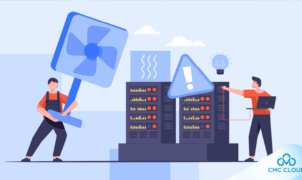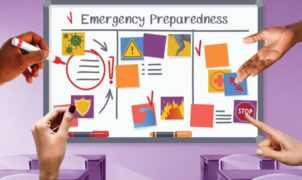
Winter has arrived, and you may be wondering whether your air conditioner needs maintenance or not. Yes, even in the winter, your air conditioner requires care to ensure it performs well when you need it. Below is a detailed guide on how to maintain your air conditioner during the winter to ensure it functions optimally.
I- Clean the Filters:
The air conditioner’s filters are responsible for removing dust, debris, bacteria, and other particles from the air before it is circulated into the room. During the winter, when the air conditioner is not in frequent operation, the filters can quickly become clogged with dust and dirt.
Importance of Cleaning Filters:
- Air Quality: Filters primarily serve to enhance indoor air quality. A blocked filter fails to effectively capture particles, resulting in reduced air quality. This is especially critical during winter when windows are often shut, and indoor air circulation is limited.
- Energy Efficiency: A clean filter enables the air conditioner to operate more efficiently. When the filter is obstructed, the unit must work harder to push air through it, leading to increased energy consumption and potentially higher utility bills.
- Temperature Control: An obstructed filter can also impact the air conditioner’s ability to maintain the desired temperature. Inefficient airflow can lead to inconsistent heating and cooling, making your home less comfortable during the winter.
Steps to Clean the Filters:
- Turn Off the Air Conditioner: Before cleaning the filters, make sure the air conditioner is turned off to prevent any risk of injury or damage.
- Locate the Filters: Depending on your air conditioner’s model, the filters may be situated in the indoor unit, near the return air grille, or within the ductwork. Consult your user manual if you are uncertain.
- Remove the Filters: Gently take out the filters from their housing. Some filters are reusable, while others are disposable. If they are reusable, you can wash them with warm, soapy water and allow them to dry before reinstalling. Disposable filters should be replaced with new ones.
- Inspect for Damage: While the filters are out, inspect them for any signs of damage, such as tears or holes. Damaged filters should be replaced promptly.
- Clean the Housing: Don’t forget to clean the filter housing or the area around the filters. Dust and debris may accumulate there, and it’s essential to maintain a clean environment for the filters to function effectively.
- Reinstall the Filters: Once the filters are clean and dry (if reusable) or replaced (if disposable), reinstall them in their original positions.
- Turn On the Air Conditioner: Finally, turn the air conditioner back on, and it should now operate with improved efficiency and maintain better indoor air quality.
Frequency of Filter Cleaning:
The frequency of filter cleaning or replacement depends on various factors, including the air quality in your area, the type of filter, and how frequently you use your air conditioner. Generally, it’s recommended to check and clean or replace filters every one to three months, especially during high-usage seasons like summer and winter.
Cleaning your air conditioner’s filters is a critical step in winter maintenance. It enhances air quality, improves energy efficiency, and ensures proper temperature control. By following these steps and maintaining a regular cleaning schedule, you can keep your air conditioner functioning optimally even during the winter months, saving both energy and money.

II- Check the System:
The second crucial aspect of winter air conditioner maintenance is checking the system itself. The system includes the various components that make up the air conditioning unit, such as the condenser, evaporator, refrigerant lines, and electrical connections. Ensuring the system is in good working order is fundamental to its efficient performance during the winter months.
Importance of Checking the System:
- Preventing Malfunctions: One of the primary objectives of checking the system is to identify and rectify any potential malfunctions or issues. By doing so, you can prevent sudden breakdowns, especially when you need the air conditioner to provide heating during the winter.
- Optimizing Efficiency: A well-maintained system operates more efficiently, reducing energy consumption and subsequently lowering your energy bills. It ensures that the air conditioner can effectively heat or cool your home without straining its components.
- Safety: A thorough system check also ensures the safety of the unit. It is vital to identify and address any electrical or refrigerant leaks that could pose a safety hazard.
Steps to Check the System:
- Turn Off the Air Conditioner: Before inspecting the system, ensure that the air conditioner is switched off to avoid electrical or mechanical hazards.
- Visual Inspection: Start with a visual inspection of the outdoor unit, the indoor unit, and all visible components. Look for signs of damage, loose connections, or any obvious issues.
- Clean the Outdoor Unit: The outdoor condenser unit is exposed to the elements and may collect debris or dirt. Carefully clean the exterior and clear any leaves, sticks, or debris that may have accumulated on or around the unit.
- Inspect Refrigerant Lines: Examine the refrigerant lines for any visible signs of damage, such as leaks or corrosion. Refrigerant lines are vital for the cooling and heating process, and any issues here can affect performance.
- Check Electrical Connections: Inspect electrical connections, wires, and terminals for any signs of wear, corrosion, or loose connections. Faulty electrical components can lead to system malfunctions and pose a safety risk.
- Test the Unit: Turn on the air conditioner to ensure it operates as expected. Listen for unusual noises, observe any odors, and check for any irregular temperature changes in the conditioned space.
- Monitor Performance: Let the air conditioner run for a while and monitor its performance. Pay attention to how quickly it reaches the desired temperature and whether it maintains that temperature consistently.
- Verify Airflow: Ensure that the airflow from the vents is strong and consistent. Weak airflow could indicate a blocked duct or a problem with the blower motor.
- Look for Ice Buildup: In winter, ice buildup is a concern. Check for ice formation on the outdoor unit, refrigerant lines, or indoor evaporator coil. Excessive ice could signal a problem with the system.
- Schedule Professional Maintenance: If you’re unsure about any aspect of the system’s condition, consider scheduling professional maintenance. A trained technician can conduct a comprehensive inspection, identify any hidden issues, and perform any necessary repairs.
Frequency of System Checks:
System checks, unlike filter cleaning, are typically conducted less frequently. It’s recommended to inspect the system at least once a year, ideally before the start of the winter season. This preventative check helps identify issues early and ensures your air conditioner is ready for winter use.
Checking the system is a fundamental component of winter air conditioner maintenance. It safeguards against malfunctions, optimizes energy efficiency, and ensures safety. Regular visual inspections, cleaning, and monitoring of system components are essential to maintaining the functionality and longevity of your air conditioner, especially during the demanding winter months.

III- Check Refrigerant Levels:
Another critical aspect of winter air conditioner maintenance is checking the refrigerant levels in the system. Refrigerant plays a central role in the cooling and heating process, and having the correct amount is crucial for the air conditioner’s optimal operation during the winter months.
Importance of Checking Refrigerant Levels:
- Efficient Heating and Cooling: Refrigerant is responsible for absorbing and releasing heat, making it integral to the heating and cooling process. If the refrigerant levels are insufficient, the system will struggle to achieve the desired temperature, resulting in reduced efficiency.
- Preventing Damage: Low refrigerant levels can lead to the air conditioner’s compressor working harder and overheating, potentially causing damage to the unit. Checking refrigerant levels helps prevent such issues.
- Avoiding Frozen Coils: In winter, low refrigerant levels can cause the evaporator coil to freeze. This not only reduces the heating capacity but can also damage the coil and impact the entire system’s functionality.
Steps to Check Refrigerant Levels:
- Turn Off the Air Conditioner: Before checking refrigerant levels, ensure that the air conditioner is switched off to avoid any potential hazards.
- Locate the Service Valve: The refrigerant lines have service valves. Attach a pressure gauge to the valve. These gauges help measure the pressure and, by extension, the refrigerant level.
- Check the Pressure: Read the pressure on the gauge. Compare it to the manufacturer’s recommended pressure levels for your specific air conditioner model. The pressure should typically fall within the recommended range. If it is too high or too low, it may indicate a problem with the refrigerant level.
- Consult a Professional: If you are unsure about how to check refrigerant levels or if you suspect an issue, it is advisable to consult a professional HVAC technician. They have the tools and expertise to accurately assess and adjust the refrigerant level.
Frequency of Refrigerant Level Checks:
Checking refrigerant levels is not typically required as frequently as other maintenance tasks like cleaning filters. It is a less frequent procedure, often performed during routine annual maintenance. However, if you notice any signs of inefficient heating or cooling or suspect a refrigerant leak, it’s crucial to address the issue promptly.
Signs of Low Refrigerant Levels:
It’s important to recognize the signs of low refrigerant levels, as addressing the issue early can prevent more significant problems. Some common signs include:
- Reduced cooling or heating capacity.
- A noticeable decrease in airflow.
- Longer time taken to reach the desired temperature.
- Frozen evaporator coils.
- Hissing or bubbling sounds in the refrigerant lines.
The Importance of Professional Assistance:
Checking and adjusting refrigerant levels should ideally be performed by a qualified HVAC technician. They have the necessary tools and expertise to handle refrigerant safely. Additionally, a professional can address any potential leaks or issues that may be causing low refrigerant levels.
Checking refrigerant levels is a critical aspect of winter air conditioner maintenance. Proper refrigerant levels are essential for efficient heating and cooling, preventing damage to the unit, and avoiding frozen coils. While it may not be necessary to check refrigerant levels as frequently as other maintenance tasks, it’s essential to recognize the signs of low refrigerant and address any issues promptly. Consulting a professional technician ensures accurate assessments and adjustments, helping your air conditioner perform optimally during the winter months.

IV- Prevent Freezing:
Preventing freezing within the air conditioning system is a vital element of winter air conditioner maintenance. Freezing can damage critical components, reduce heating efficiency, and disrupt the comfort of your indoor environment. This section delves into the significance of preventing freezing and the specific steps to avoid it.
Importance of Preventing Freezing:
- Protecting Components: Freezing can cause serious harm to your air conditioning system. It can damage the evaporator coil, reduce the efficiency of the refrigeration cycle, and potentially lead to costly repairs.
- Maintaining Heating Efficiency: In the winter, your air conditioner is expected to provide heating. Freezing can hinder its capacity to generate warm air, leading to decreased heating performance.
- Avoiding Discomfort: Frozen components can result in insufficient or inconsistent heating, causing discomfort and inconvenience in your living space. Effective prevention ensures a warm and comfortable indoor environment.
Steps to Prevent Freezing:
- Insulate Refrigerant Lines: Exposed refrigerant lines can be susceptible to freezing. To prevent this, ensure that the refrigerant lines are adequately insulated. Insulation helps maintain the temperature of the refrigerant, preventing it from reaching a freezing point.
- Check for Refrigerant Leaks: Refrigerant leaks can lower the pressure in the system, potentially leading to freezing. If you suspect a leak, consult a professional technician to locate and repair it. Regular refrigerant checks as part of annual maintenance can help identify and address leaks early.
- Maintain Proper Airflow: Insufficient airflow can lead to freezing. Ensure that air vents and registers are unobstructed, and replace air filters as recommended. Adequate airflow prevents the evaporator coil from getting too cold.
- Set Thermostat Temperature Appropriately: A common mistake is setting the thermostat too low. This can cause the evaporator coil to become too cold and lead to freezing. Maintain a reasonable temperature setting to prevent this issue.
- Schedule Annual Professional Maintenance: An essential step in preventing freezing is scheduling professional annual maintenance. Experienced technicians can thoroughly inspect the system for potential issues, adjust settings, and identify and fix problems before they lead to freezing.
Signs of Freezing:
Recognizing the signs of freezing is crucial in addressing the issue promptly. Common indicators include:
- Reduced or no airflow from vents.
- A noticeable drop in heating capacity.
- Ice buildup on the indoor unit or refrigerant lines.
- Unusual noises like hissing or gurgling in the system.
Importance of Professional Assistance:
While some preventive measures can be undertaken by homeowners, like maintaining proper airflow and setting the thermostat appropriately, addressing freezing issues typically requires professional assistance. HVAC technicians have the expertise and tools to locate and repair refrigerant leaks, insulate refrigerant lines, and ensure the system is properly adjusted to prevent freezing.
Preventing freezing within the air conditioning system is a critical component of winter maintenance. It safeguards against damage to system components, maintains heating efficiency, and ensures comfort in your home. By insulating refrigerant lines, checking for leaks, maintaining proper airflow, setting the thermostat appropriately, and scheduling annual professional maintenance, you can protect your air conditioner from the adverse effects of freezing and enjoy reliable heating during the winter months.

V- Regular Maintenance Schedule:
Implementing a regular maintenance schedule is a cornerstone of effective winter air conditioner maintenance. This section highlights the importance of a consistent maintenance routine and provides a detailed analysis of what it entails.
Importance of a Regular Maintenance Schedule:
- Sustaining Performance: Regular maintenance ensures that your air conditioner continues to perform at its best during the winter. This means consistent and efficient heating, optimal indoor air quality, and dependable operation.
- Longevity: Well-maintained air conditioners tend to have longer lifespans. Regular upkeep minimizes wear and tear on components, reducing the need for costly replacements or repairs.
- Energy Efficiency: A well-maintained system is more energy-efficient, resulting in lower utility bills. When components are clean, filters are changed, and refrigerant levels are correct, the air conditioner operates without straining, saving energy and reducing your environmental impact.
- Safety: Regular maintenance checks can identify safety issues, such as electrical problems or refrigerant leaks, before they become hazardous. Ensuring the safety of your HVAC system is a paramount concern.
Elements of a Regular Maintenance Schedule:
- Filter Cleaning or Replacement: Cleaning or replacing air filters is a recurring task in the maintenance schedule. Filters should be checked monthly and replaced every one to three months, depending on factors like air quality and usage.
- System Checks: A comprehensive inspection of the entire system should be performed annually. This inspection includes visual checks for damage, cleaning, and examination of components like refrigerant lines and electrical connections. It can identify potential issues early and prevent system breakdowns.
- Refrigerant Checks: Regular checks of refrigerant levels are part of the maintenance schedule. Although this may not be needed as frequently as other tasks, it’s essential to address any refrigerant issues promptly.
- Preventing Freezing: Preventative measures to avoid freezing are incorporated into the maintenance schedule. This includes insulating refrigerant lines, checking for refrigerant leaks, ensuring proper airflow, and maintaining an appropriate thermostat setting.
- Thermostat Calibration: Calibrating the thermostat is necessary to ensure it accurately senses and maintains the desired temperature. A calibrated thermostat prevents the system from overworking and can result in energy savings.
- Lubrication and Component Cleaning: Some components, such as motors and fans, may require occasional lubrication. Cleaning these parts as part of the maintenance schedule can keep the system operating smoothly.
Benefits of Professional Maintenance:
While homeowners can perform some maintenance tasks, such as filter cleaning, professional maintenance offers distinct advantages:
- Comprehensive Inspection: HVAC technicians conduct thorough inspections, identifying hidden issues and addressing potential problems before they escalate.
- Proper Calibration: Professionals ensure that the thermostat and other settings are correctly calibrated, optimizing energy efficiency.
- Safety Checks: Technicians are equipped to perform safety checks, identifying electrical or refrigerant issues that could pose safety hazards.
Frequency of Regular Maintenance:
The frequency of regular maintenance can vary depending on the system, its age, and usage. However, as a general guideline, it is recommended to schedule professional maintenance at least once a year, ideally before the onset of the winter season.
A regular maintenance schedule is the linchpin of effective winter air conditioner maintenance. It sustains performance, prolongs the system’s lifespan, enhances energy efficiency, and prioritizes safety. By adhering to a maintenance routine that includes filter maintenance, system checks, refrigerant inspections, freezing prevention, thermostat calibration, and lubrication, you can ensure that your air conditioner functions optimally throughout the winter and beyond. Regular professional maintenance is invaluable for comprehensive assessments and peace of mind, ensuring your HVAC system is ready for whatever challenges the winter season brings.

VI- Benefits of Winter Air Conditioner Maintenance:
Finally, remember that maintaining your air conditioner during the winter not only helps maintain its performance but also saves energy and protects it from malfunction. This can save you money and extend the lifespan of your air conditioner.
By following these simple maintenance steps, you can ensure that your air conditioner will operate effectively during the winter and always be ready to serve you when needed.







 Welcome to LawyerNote, your premier destination for expert legal counsel tailored to your unique needs. At LawyerNote, we specialize in navigating the complexities of the legal system, offering comprehensive solutions to our valued clients. With a team of seasoned attorneys covering diverse fields including corporate law, family law, and criminal defense, we’re equipped to handle a wide spectrum of legal matters. Our unwavering commitment to excellence, integrity, and client satisfaction sets LawyerNote apart. Whether you’re grappling with a complex litigation case or seeking guidance on business transactions, LawyerNote is your trusted legal partner every step of the way.
Welcome to LawyerNote, your premier destination for expert legal counsel tailored to your unique needs. At LawyerNote, we specialize in navigating the complexities of the legal system, offering comprehensive solutions to our valued clients. With a team of seasoned attorneys covering diverse fields including corporate law, family law, and criminal defense, we’re equipped to handle a wide spectrum of legal matters. Our unwavering commitment to excellence, integrity, and client satisfaction sets LawyerNote apart. Whether you’re grappling with a complex litigation case or seeking guidance on business transactions, LawyerNote is your trusted legal partner every step of the way.




